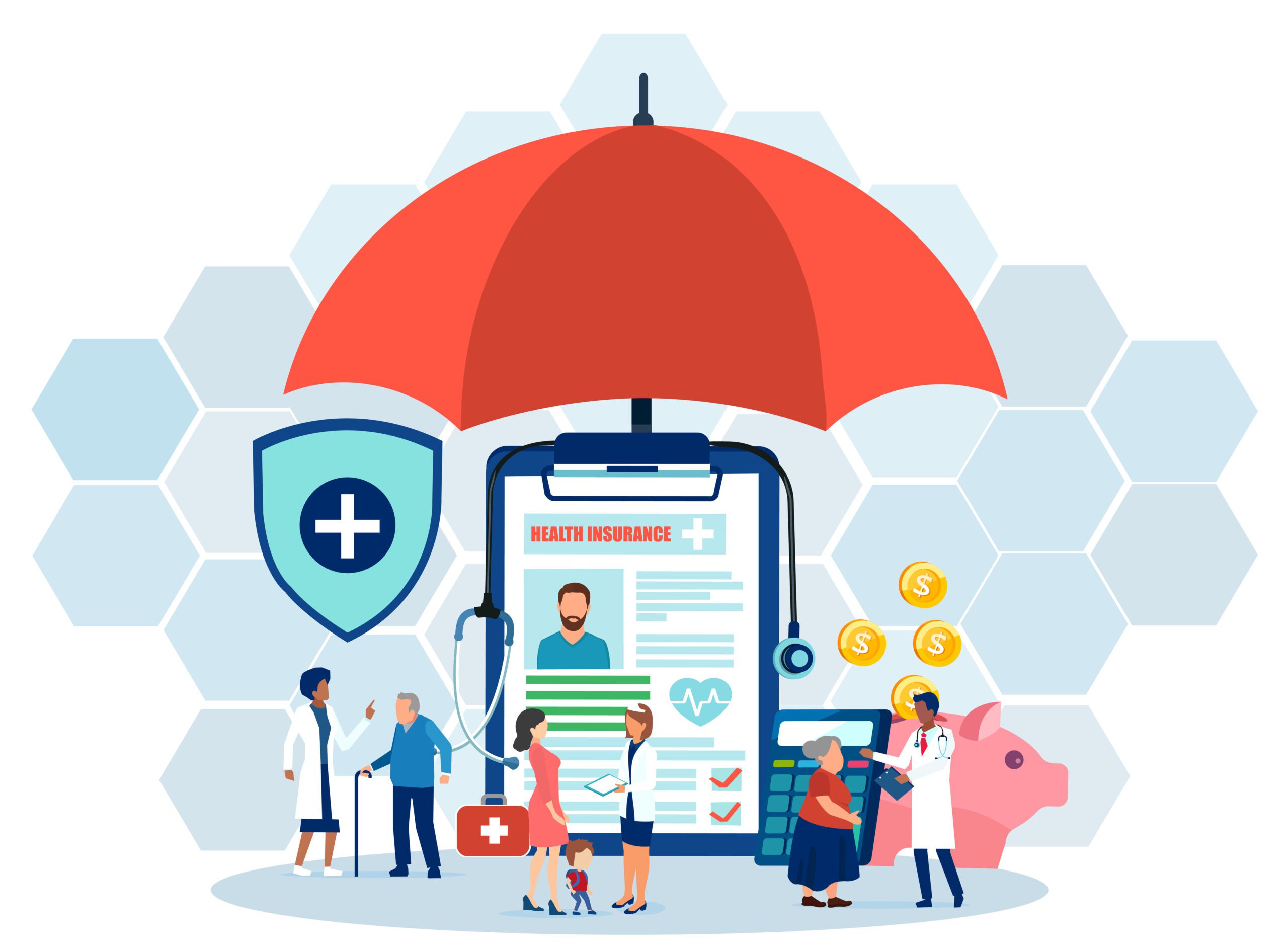CalAIM ECM Introduction
California Advancing and Innovating Medi-Cal, also known as CalAIM, is a multi-year plan to transform California’s Medi-Cal program and make it integrate more seamlessly with the care delivery and payment reform initiative led by the California Department of Health Care Services (DHCS). DHCS has come up with a framework of renewals that broaden delivery systems, program, & payment reform across the Medi-Cal Program. CalAim focuses on improving health equity, quality of care and wellbeing for Medi-Cal members by expanding access to coordinated, whole-person care and addressing health-related social needs of the population.
The key priorities of CalAIM are to leverage Medicaid as a tool to address complex challenges faced by California’s residents with complex needs.
This proposal highlights the opportunity to fund non-clinical treatments through Medi-Cal that address socioeconomic determinants of health and lessen health disparities and inequities. These interventions will be centered on a whole-person care approach.
CalAIM will establish new programs and make significant changes to many of their current programs, in addition to the $782 million allocated from the general fund in the 2021–22 budget and more in succeeding budget years. This will result in large federal matching funds as an outcome.
CalAIM also includes larger system, program, and payment improvements that enable the state to provide services with a population health, person-centered approach and put the emphasis on enhancing outcomes for all Californians. Achieving such objectives will have major impacts on a person’s health and quality of life, as well as eventually lower the per-capita cost through iterative system reform. DHCS understands the critical need to explore these concerns and their priorities within the state budget process and intend to collaborate with the Administration, Legislature, and other partners. These proposals ultimately depend upon the funding available.
CalAIM Background
Because of changes by the Affordable Care Act, Medi-Cal has expanded and changed over the last 10 years and brought in federal regulations and policy changes. During this time, DHCS upgraded many benefits through Medi-Cal plans to provide care coordination and care management through a fee-for-service system with a broader array of services by supporting and stabilizing the Medi-Cal members. In January 2022, the initial reforms will go into effect and more improvements will follow through 2027. For several CalAIM covered activities, a waiver from the Centers for Medicare & Medicaid Services were to be approved and this decision was anticipated in December 2021. The state’s HCBS program will receive a total of $4.3 billion in funding from CalAIM. This will lower the possibility of service interruptions during emergencies for those who depend on HCBS to keep safe and healthy. Additionally, CMS states that under section 9817 of the American Rescue Plan Act of 2021, California qualifies for a temporary 10 % point raise in the federal medical assistance percentage for specific Medicaid costs for HCBS.
Who CalAIM Will Help:
CalAIM helps all of the Medi-Cal enrollees, whose main focus is to improve care for people with complex medical needs and behavioral health needs, such as those with mental illness, serious emotional disturbance and/or substance use disorder, senior citizens with disabilities, people released from jail or prison, homelessness who have complex behavioral and physical needs, children with a chronic medical illness like cancer, epilepsy or congenital heart disease, or young children in foster care.
Key Goals:
- Identify and manage comprehensive needs through whole-person care approaches and social drivers of health.
- Improve quality outcomes, reduce health disparities, and transform the delivery system through value‑based initiatives, modernization, and payment reform.
- Make Medi-Cal a more consistent and seamless system for enrollees to navigate by reducing complexity and increasing flexibility.
The outcomes require plans and incentivize public health systems to be more responsive, equitable, and outcome focused by:
- Increasing equity by getting the right patients to the right services at the right time for all of the population.
- Implementing payment reform, thus laying the framework for paying physical and behavioral health professionals according to outcomes rather than services.
- Enforcing Medi-Cal managed care plans to coordinate access to services offered by counties and community-based groups to provide more responsibility for these plans.
Key components of CalAIM:
The key components are to support members with complex health and social needs and to expand care coordination. Key components include:
- Behavioral health payment reform
- Enhanced care management (ECM)
- Community Supports
- Providing access and transforming health (PATH)
- Substance use disorder services and initiatives
- Supporting coordination and integration for dual eligible
- Improve MediCal dental benefits, delivery system transformation and alignment
CalAIM ECM: Enhanced Care Management
Through extensive coordination of health and health-related services, the new state-wide Medi-Cal benefit known as “Enhanced Care Management” (ECM) will meet the clinical and non-clinical requirements of the most severely underserved members, whether they are at home, in the doctor’s office, at a shelter, or on the street. The delivery of physical, behavioral, dental, developmental, and social services will be coordinated by a single, lead treatment manager for beneficiaries, making it simpler for members to receive the proper care at the appropriate time. It is important to ensure that your care management platform is compliant with CalAIM ECM.
Community Supports: Community supports are designed to address the health-related social needs without the formality of CalAIM ECM. Plans choose to offer community services when, where and to whom every six months to provide new plan offerings and different services for each county. The most common services offered are medically supportive food/meals, tailored meals, asthma remediation, housing transition navigation services, housing, tenancy and sustaining services. Some community supports, such as nursing facility transition/diversion to assisted living facilities, will correspond with future CalAIM components such as the transfer of institutional long-term care duty to managed care and are more likely to be put into place in 2023.
Population Health Management (PHM):
Parallel to CalAIM, DCHS introduced PHM to provide Medi-Cal participants with access to comprehensive management that will help them live longer, healthier lives. PHM will establish a detailed, accountable plan with their networks and partners who they serve by addressing member needs as well as the continuum of care, engage members and foster trust, evaluate data-driven risk stratification that offers predictive analysis and care gaps to standardize processes, upstream wellness and preventive services, provide care management approaches across the delivery systems, and reduce health disparities. By 2023, all plans must adhere to the DHCS PHM Standards as well as the NCQA PHM Standards.
The goal of CalAIM’s PHM program is to identify care needs and provide tailored solutions. More than 90% of Medi-Cal beneficiaries are anticipated to be accountable for care. PHM focuses primarily on parents and their kids, expectant mothers, older persons with chronic illnesses or impairments, and people with disabilities in order to create systems that are person-centric and help people live longer, healthier lives with improved health outcomes.
DHCS is creating a state-wide PHM Service to collect and aggregate various data to support the PHM goal while the PHM program is being implemented.
In particular, the PHM Service will:
- Allow Medi-Cal members, Medi-Cal plans, clinicians, counties, and other authorized users access to more up-to-date, accurate, and thorough data on the members’ health histories and needs in order to improve care and avoid duplication of effort.
- Enhance the functions of risk segmentation, risk tiering, and stratification.
- Establish trustworthy relationships between members and their care team by making it easier for members to update their information, enabling them with access to health education, their rights and associated benefits, and details on how their data is used, among other things.
- Provide the ability for DHCS to understand population health trends
Conclusion
The managed care plans, physical and behavioral health care providers, county agencies, and social service providers that make up the core of CalAIM must be able to aggregate data and share information in real time about patients or clients they have in common. For instance, to stratify the various Medi-Cal needs and conduct the proactive, person-centered outreach that is essential to preventive treatment, CalAIM’s PHM program will need to exchange health data in a reliable and efficient manner. To organize care and services for people with complex needs, enhanced care managers will also rely on efficient data interchange. In order to make whole-person care possible, local and state data sharing initiatives must be successful.
Sources:
- www.dhcs.ca.gov/CalAIM/Documents/CalAIM-Infographic.pdf
- www.dhcs.ca.gov/provgovpart/Documents/CalAIM/CalAIM-High-Level-Summary.pdf
- www.chcf.org/publication/calaim-explained-five-year-plan-transform-medi-cal/#who-will-calaim-help
- www.cms.gov/newsroom/press-releases/cms-announces-extensions-calaim-support-greater-health-equity-across-communities
- www.dhcs.ca.gov/calaim#:~:text=Goals%20of%20CalAIM&text=Improve%20quality%20outcomes%2C%20reduce%20health,reducing%20complexity%20and%20increasing%20flexibility.
- www.counties.org/csac-bulletin-article/states-massive-medi-cal-transformation-project-called-calaim-approved
- www.dhcs.ca.gov/CalAIM/Pages/PopulationHealthManagement.aspx
- www.chcf.org/resource/focus-on-calaim/data-exchange/
- www.dhcs.ca.gov/Pages/ECMandILOS.aspx
- www.dhcs.ca.gov/calaim
- www.chcf.org/publication/launching-calaim-10-observations-ecm-community-supports/
- www.chcf.org/wp-content/uploads/2022/05/LaunchingCalAIM10ObservationsECMCommunitySupports.pdf
- www.chcf.org/publication/calaim-explained-five-year-plan-transform-medi-cal/#calaims-goals
- www.chcf.org/publication/calaim-explained-five-year-plan-transform-medi-cal/#what-is-calaim
- www.chcf.org/publication/calaim-explained-overview-new-programs-key-changes/#summary







